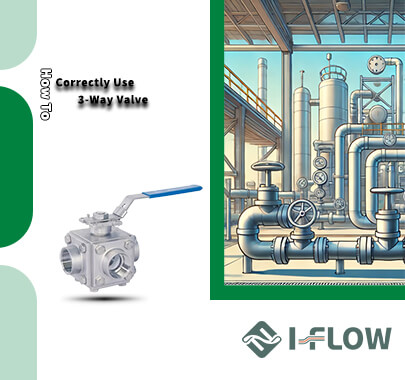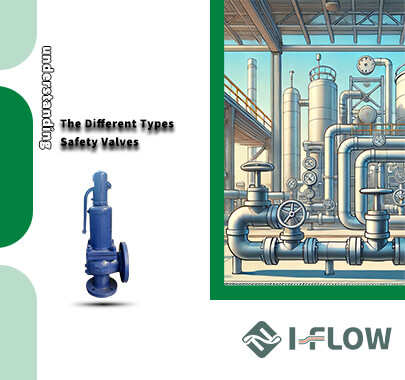When designing or upgrading a fluid control system, choosing the right valve type is crucial for ensuring optimal performance, efficiency, and reliability. Butterfly valves and gate valves are two of the most commonly used options, yet they differ significantly in their design, functionality, and application. This detailed comparison will help you understand their unique characteristics, advantages, and potential use cases.
1. Structural Design
Butterfly Valve:consists of a circular disc mounted on a rotating shaft, positioned within the flow path of a pipeline. This disc rotates to open or close the valve. It features a compact and lightweight construction, making it suitable for installations with limited space. Its design allows it to function as both an on-off valve and a throttling device for flow regulation.
Gate Valve:operates by raising or lowering a flat or wedge-shaped gate to start or stop fluid flow. The gate retracts completely into the body when fully open, ensuring no obstruction to the flow path. The structure is bulkier and heavier than that of a butterfly valve, with multiple components such as a bonnet, stem, and seats. It is primarily used for on-off control.
2. Functional Differences
Butterfly Valve:Operates with a simple quarter-turn (90° rotation), allowing for rapid opening and closing.
Provides throttling capabilities but introduces slight flow resistance due to the disc remaining in the flow path, even when fully open.
The sealing mechanism may involve elastomeric, metal, or hybrid materials, depending on the application requirements.
Gate Valve:Requires multiple full turns of the handwheel or actuator to fully open or close, making operation slower but more precise.
Not suitable for throttling or partial opening, as this can lead to turbulence and accelerated wear of internal components.
Offers a tight shutoff with minimal pressure drop in the fully open position.
3. Flow Characteristics
Butterfly Valve:Designed for moderate flow control with some degree of obstruction due to the central disc.
Best suited for systems where minor pressure drops are acceptable.
Flow control is less precise compared to gate valves, but sufficient for many general-purpose applications.
Gate Valve:Ensures a straight-through, unobstructed flow when fully open, resulting in negligible pressure drop.
Ideal for applications requiring a clear bore for high-pressure or high-volume fluid transfer.
Better suited for systems demanding low turbulence and maximum flow capacity.
4. Size, Weight, and Installation
Butterfly Valve:Compact, lightweight, and easy to install in systems with spatial constraints.
Suitable for applications requiring frequent operation or limited installation space.
Typically mounted between flanges with a wafer or lug-type design.
Gate Valve:Larger and heavier due to the additional components and robust construction.
Requires more installation space, making it less practical for compact systems.
Often flanged or welded to pipelines in industrial settings.
5. Application Areas
Butterfly Valve:Widely used in low- to medium-pressure systems such as water distribution, HVAC, fire protection, and irrigation systems.
Common in industries requiring moderate flow control and cost-effective solutions.
Gate Valve:Preferred for high-pressure and high-temperature systems, including oil and gas, petrochemicals, power generation, and large-scale water treatment facilities.
Often employed in applications requiring infrequent operation but strict shutoff performance.
6. Maintenance and Durability
Butterfly Valve:Simple design with fewer moving parts leads to lower maintenance requirements.
Elastomeric seals may require periodic replacement, especially in harsh environments.
Well-suited for systems requiring frequent operation and minimal downtime.
Gate Valve:More complex with additional components, resulting in higher maintenance demands.
Longer lifespan in demanding conditions due to its robust construction, provided it is operated properly.
Ideal for systems where reliability under high stress is critical.
7. Cost Considerations
Butterfly Valve:Generally more affordable due to simpler design and reduced material requirements.
Cost-effective for large-scale installations or systems with frequent valve usage.
Gate Valve:Higher initial cost due to its robust construction and heavier materials.
Economical over the long term in high-pressure applications where durability and minimal flow resistance are essential.
8.Butterfly Valve vs. Gate Valve: A Summary Table
Aspect
| Butterfly Valve
| Gate Valve
|
Design
| Rotating disc in the flow path
| Vertical gate mechanism
|
Operation
| Quick (quarter-turn)
| Slower (multi-turn)
|
Flow Control
| Moderate throttling with some resistance
| Full, unobstructed flow when open
|
Size/Weight
| Compact and lightweight
| Larger and heavier
|
Applications
| HVAC, water systems, general use
| High-pressure, industrial systems
|
Cost
| Economical
| Higher upfront cost
|

.png)
 en |
en |














